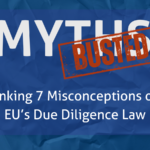This briefing discusses the loopholes that some countries are pushing for in order to reduce the efforts they would have to make to cut emissions in the non-ETS sectors.
About 60% of the EU’s emissions are covered by national targets under the currently called Effort Sharing Decision (ESD). It includes sectors not covered by the Emissions Trading System, such as road transport, agriculture, waste and buildings. As part of its overall at least 40% emission reduction pledge for 2030, the EU agreed to cut emissions by 30% (from 2005 levels) from these non-ETS sectors. The 30% EU target will be divided into different Member State targets. It is important to note that in order for the EU to be in line with the objectives of the Paris Agreement, the -30% target would need to be substantially increased. The same applies for the national targets. It is deeply troubling that countries continue to look for ways to reduce their targets instead of increasing them.
This briefing discusses the loopholes that some countries are pushing for in order to reduce the efforts they would have to make to cut emissions in the non-ETS sectors. These loopholes include using:
- the forest and land-use sector instead of reducing emissions in the non-ETS sectors (maximum 1.3 billion, likely proposed by the Commission: less than 300 million);
- surplus from pre-2020 to fulfil obligations after 2020 (maximum 1.5 billion, likely zero as it will not be proposed by the Commission);
- ETS allowances to meet targets in the non-ETS sectors (maximum 300 million, likely proposed by the Commission: around 100 million).
Download CAN Europe Briefing: trick list of how countries can avoid climate action
See also our CAN Europe Briefing: No cheating from the start 13072016

